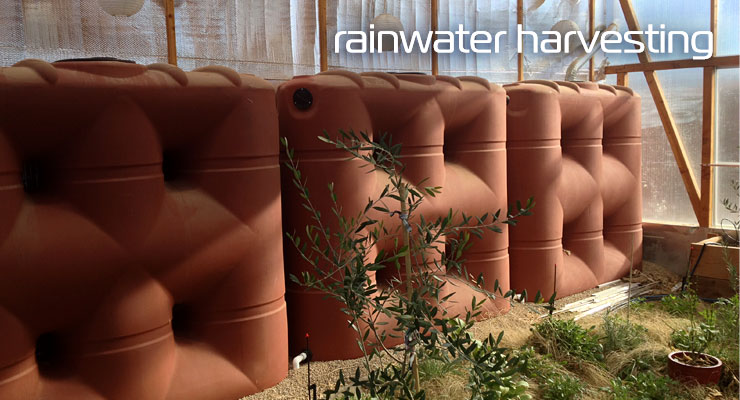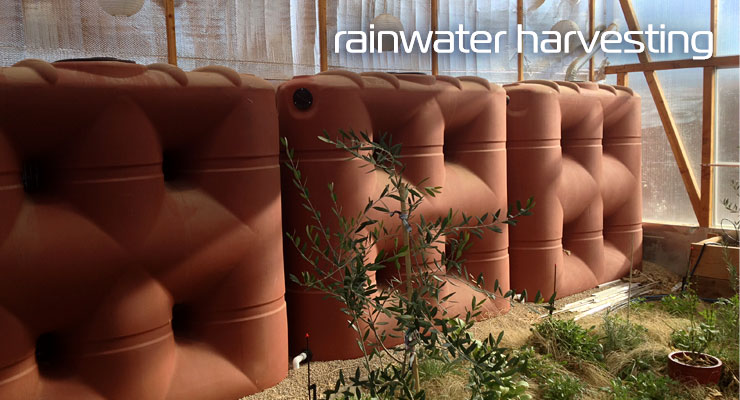
Surviving the Southwest: Homesteading with Rainwater, Xeriscaping, and Greywater Systems
The Southwest, a land of dramatic canyons, sun-drenched mesas, and resilient flora, captivates with its stark beauty. Yet, beneath this allure lies a growing challenge: water scarcity. Climate change is exacerbating drought conditions, placing immense pressure on homesteaders striving to cultivate a sustainable life. According to the U.S. Drought Monitor, "Nearly all of the Southwest is experiencing some level of drought, with extreme and exceptional drought conditions persisting across large portions of Arizona, New Mexico, and Nevada." But resilience is in the spirit of homesteading, and with ingenuity and the right strategies, thriving in this arid landscape is possible. This post explores how rainwater harvesting, xeriscaping, and greywater systems can empower Southwest homesteaders to conserve water and build a more sustainable future.

Rainwater Harvesting: Capturing the Sky's Bounty
Rainwater harvesting is a fundamental practice for Southwest homesteaders, offering a direct and sustainable water source. By collecting rainwater from rooftops, you can significantly reduce your reliance on municipal water supplies or wells.
System Design:
- Catchment Area: The larger your roof area, the more rainwater you can collect. Calculate your roof's square footage to determine your potential yield.
- Tank Sizing: A crucial step. Consider your water needs (garden, livestock, household use) and the average rainfall in your area. Remember that rainfall varies greatly across the Southwest. Use historical rainfall data for your specific location.
- Material Selection: Food-grade plastic tanks are common and relatively inexpensive. Metal tanks (galvanized steel or stainless steel) are more durable but also more expensive.
- Filtration: Essential for clean water. Start with a first flush diverter to discard the initial runoff, which contains debris. Leaf screens on gutters prevent leaves and large particles from entering the system.
- Storage Options: Above-ground tanks are easier to install and monitor. Below-ground tanks offer better temperature control and aesthetics but are more complex to install.
Calculating Potential Yield:
To estimate how much water you can collect, use this formula:
- Gallons = Roof Area (square feet) x Rainfall (inches) x 0.623 (gallons per inch per square foot) x Efficiency Factor (typically 0.8-0.9 for losses)
For example, a 1,000 square foot roof in a 12-inch rainfall zone, with an 85% efficiency, could collect:
- 1,000 sq ft x 12 inches x 0.623 x 0.85 = 6,354 gallons per year
Installation Tips:
- Proper Sealing: Ensure all connections are watertight to prevent leaks.
- Overflow Management: Design an overflow system to handle excess water during heavy rains. Direct the overflow away from your foundation.
- Mosquito Prevention: Seal all openings to prevent mosquitoes from breeding in the tank. Use mosquito screens on vents and overflow pipes. You can also add mosquito dunks to the water.
Legal Considerations:
- Arizona: Arizona generally allows rainwater harvesting without permits or restrictions. However, check local municipality codes for any specific regulations.
- Arizona Department of Water Resources: [Link to Arizona Department of Water Resources (Placeholder)]
- New Mexico: New Mexico strongly encourages rainwater harvesting and offers tax credits for installing systems. There are generally no restrictions on rainwater harvesting for domestic use.
- New Mexico Office of the State Engineer: [Link to New Mexico Office of the State Engineer (Placeholder)]
Xeriscaping: Designing a Water-Wise Oasis
Xeriscaping is a landscaping approach that minimizes water use by utilizing drought-tolerant plants and efficient irrigation techniques. It's not about "zero-scaping" (gravel only) but about creating a beautiful and thriving landscape adapted to arid conditions.
Step-by-Step Guide:
Planning & Design: Map out your yard and identify areas with different sun exposure and soil types. Consider the mature size of plants when planning.
Soil Preparation: Amend your soil with compost and native soil to improve drainage and water retention. Avoid overly rich soil, as it can encourage excessive growth and water use.
Plant Selection: Choose native and drought-tolerant plants that thrive in your local climate. Excellent choices for the Southwest include:
- Desert Spoon (Dasylirion wheeleri): A striking architectural plant with a rosette of blue-green leaves. Plant in well-drained soil and full sun. Water sparingly once established.
- Red Yucca (Hesperaloe parviflora): A hardy succulent with red flower spikes that attract hummingbirds. Plant in well-drained soil and full sun. Extremely drought-tolerant.
- Agave species: Various Agave species, such as Agave parryi and Agave americana, offer unique textures and forms. Plant in well-drained soil and full sun. Be cautious of their sharp spines.
Mulching: Apply a thick layer of decomposed granite or gravel mulch around plants to retain moisture, suppress weeds, and regulate soil temperature.
Efficient Irrigation: Use drip irrigation to deliver water directly to plant roots, minimizing water loss through evaporation. Water deeply but infrequently.
Greywater Systems: Reusing Water for Irrigation
Greywater refers to gently used water from showers, sinks, and washing machines (excluding toilets). By diverting greywater to irrigate your xeriscaped garden, you can further reduce your water consumption.
System Types:
- Laundry-to-Landscape: A simple system that diverts water from your washing machine to your garden. Requires a diverter valve and a mulch basin.
- Branched Drain Systems: More complex systems that collect greywater from multiple sources (showers, sinks, washing machine) and distribute it to plants through subsurface irrigation.
Diverting and Filtering Greywater:
- Divert Greywater: Install a diverter valve on your washing machine or plumbing to direct greywater to your garden.
- Filter Greywater: Use a mulch basin filled with wood chips or gravel to filter out debris and organic matter. The mulch basin also helps to distribute the water evenly.
- Subsurface Irrigation: Use drip irrigation or soaker hoses to deliver greywater directly to plant roots. Avoid spraying greywater on edible plant parts.
Important Considerations:
- Biodegradable Soaps: Use biodegradable, phosphate-free soaps and detergents to avoid harming plants or contaminating the soil.
- Avoid Contact with Edibles: Do not use greywater on vegetables or fruits that are eaten raw.
- Regular Maintenance: Clean the mulch basin regularly to prevent clogging.
Legal Considerations:
- Arizona: Arizona has specific regulations for greywater systems. Laundry-to-landscape systems typically do not require a permit if they meet certain criteria. More complex systems may require a permit.
- Arizona Department of Environmental Quality: [Link to Arizona Department of Environmental Quality (Placeholder)]
- New Mexico: New Mexico encourages greywater reuse and offers guidelines for safe and effective systems. Permits may be required depending on the system's complexity and flow rate.
- New Mexico Environment Department: [Link to New Mexico Environment Department (Placeholder)]
Success Stories:
The Millers in Sedona, Arizona, reduced their reliance on well water by 75% by implementing rainwater harvesting and xeriscaping. "We were shocked by how much water we could save just by switching to native plants and collecting rainwater," says Sarah Miller. Their lush, water-wise garden is a testament to the power of sustainable homesteading practices.
Community Resilience:
Sharing knowledge and collaborating with neighbors is crucial for building water resilience in the Southwest. Join local gardening clubs, attend workshops on rainwater harvesting and xeriscaping, and share your experiences with others.
- Arizona Native Plant Society: [Link to Arizona Native Plant Society (Placeholder)]
- New Mexico Xeriscape Association: [Link to New Mexico Xeriscape Association (Placeholder)]
Conclusion:
Embracing rainwater harvesting, xeriscaping, and greywater systems is not just about conserving water; it's about building a more sustainable and resilient future for ourselves and our communities. By adopting these practices, we can transform our homesteads into water-wise oases that thrive in the face of climate change. Remember, homesteading is deeply interconnected with environmental stewardship, and by conserving our precious water resources, we can ensure a vibrant and sustainable future for generations to come.